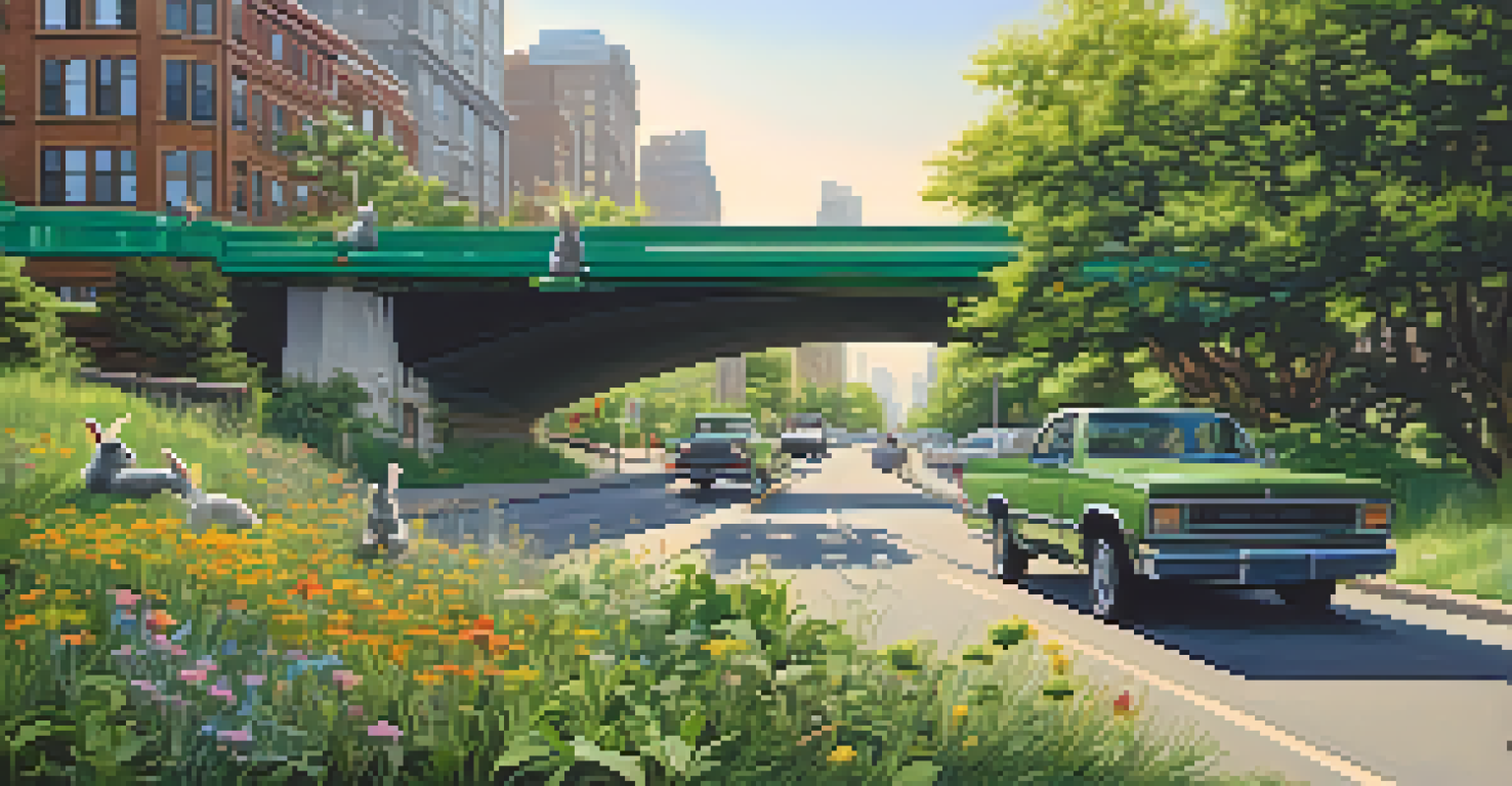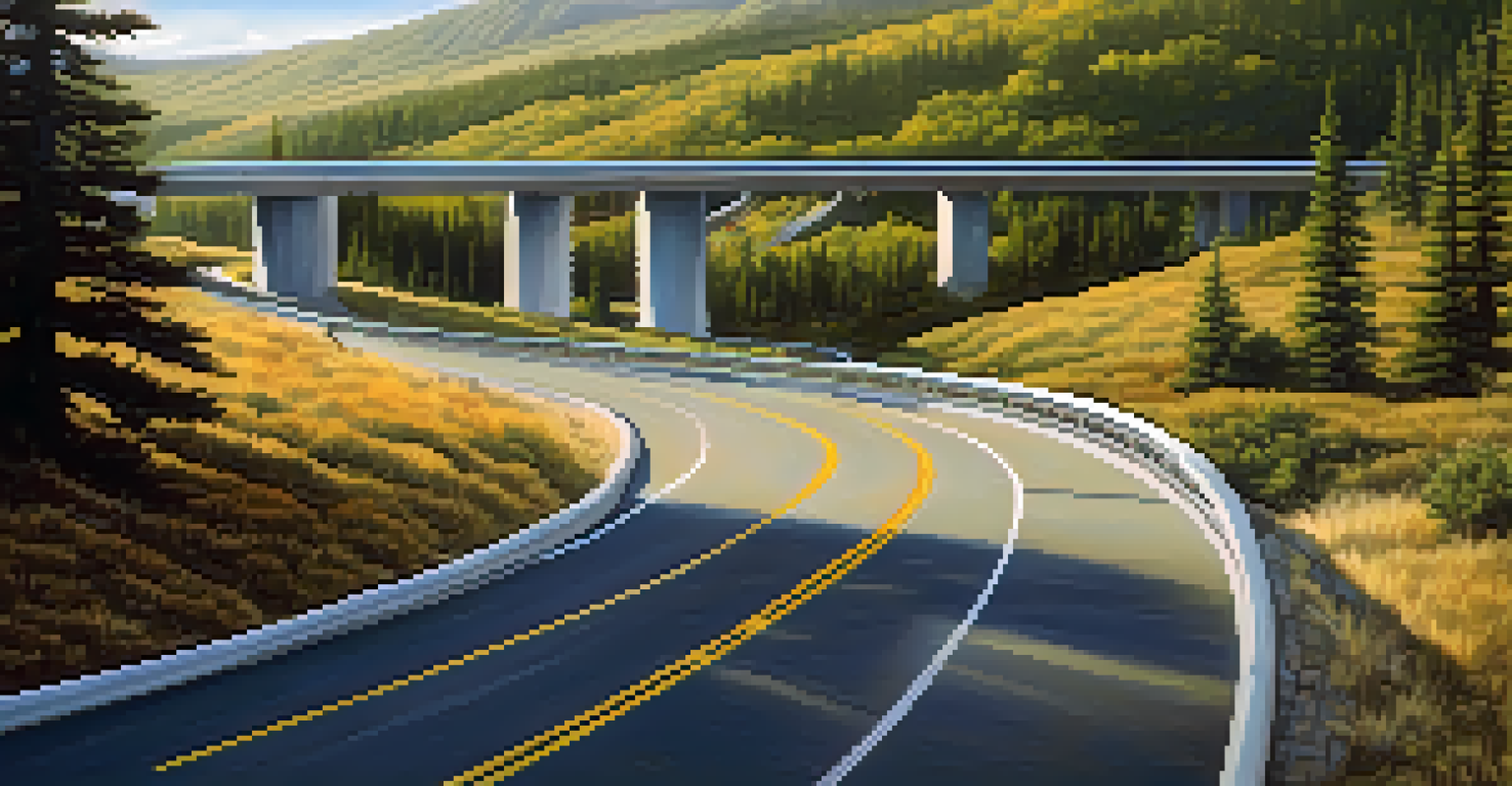Wildlife Corridors: Connecting Habitats for Animal Survival

What Are Wildlife Corridors and Why Do They Matter?
Wildlife corridors are specific areas of land that connect different habitats, allowing animals to move freely between them. These pathways are crucial for species that need to travel for food, mating, or seasonal migrations. In a world increasingly dominated by urban development, these corridors serve as lifelines for wildlife, ensuring their survival in fragmented environments.
The preservation of wildlife corridors is essential to ensure biodiversity and the health of ecosystems.
Imagine a bustling highway where animals are forced to navigate around cars and buildings—this is often the reality they face without corridors. When natural habitats become isolated, animals may struggle to find mates, leading to genetic bottlenecks and declining populations. Corridors mitigate these issues by providing safe routes that facilitate movement and promote genetic diversity.
Moreover, wildlife corridors contribute to ecosystem health by allowing various species to access different resources. This interconnectedness ensures that ecosystems remain balanced, as each species plays a unique role in its habitat. By protecting and creating wildlife corridors, we invest in the future of biodiversity.
The Role of Wildlife Corridors in Biodiversity Conservation
Biodiversity is vital for the health of our planet, and wildlife corridors play a significant role in its conservation. These pathways enable various species to thrive, which in turn supports the stability of entire ecosystems. By facilitating movement, corridors help maintain healthy populations of both flora and fauna, which are crucial for ecosystem resilience.

When animals can migrate freely, they can adapt to changing environmental conditions, such as climate change. For instance, some species may need to shift their range to find suitable habitats as temperatures rise. Corridors provide the necessary access for these movements, reducing the risk of extinction for vulnerable species.
Wildlife Corridors Aid Species Survival
These pathways connect habitats, allowing animals to move freely for food, mating, and migration, which is essential in fragmented environments.
Additionally, wildlife corridors can enhance ecosystem services, such as pollination and seed dispersal, which are essential for food production. By ensuring that diverse species can interact, we create ecosystems that are not only rich in life but also beneficial to human communities. Thus, protecting these corridors is a win-win for both wildlife and people.
How Urban Development Impacts Animal Habitats
Urban development often leads to habitat fragmentation, where large natural areas are divided into smaller, isolated patches. This fragmentation can create barriers for wildlife, making it difficult for them to cross roads, buildings, and other human-made structures. As a result, many species find themselves cut off from essential resources, drastically affecting their survival rates.
We won't have a society if we destroy the environment.
For example, consider the plight of a deer trying to reach a forest that has been separated by a busy road. Without a safe passage, the deer risks injury or death, not to mention the stress of navigating unfamiliar urban landscapes. Such scenarios highlight the urgent need for thoughtful planning in urban environments to include wildlife-friendly solutions.
Fortunately, urban planners and conservationists are increasingly recognizing the importance of integrating wildlife corridors into their designs. By incorporating green spaces, overpasses, and underpasses, we can create a more harmonious coexistence between humans and wildlife. This proactive approach not only protects animal habitats but also enhances the quality of life in urban areas.
The Benefits of Wildlife Corridors for Ecosystem Health
Wildlife corridors are instrumental in maintaining ecosystem health by supporting various species and their interactions. When animals can move freely, they contribute to essential processes like pollination, seed dispersal, and nutrient cycling. This interconnected web of life ensures that ecosystems can thrive even in the face of environmental challenges.
Consider a forest where birds and bees pollinate flowers, leading to the growth of fruits and seeds that feed other wildlife. If a barrier disrupts this interaction, the entire ecosystem could suffer. By preserving corridors, we not only protect individual species but also ensure the continued functioning of these vital ecological processes.
Corridors Boost Ecosystem Health
By facilitating the movement of various species, wildlife corridors support essential ecological processes like pollination and nutrient cycling.
Moreover, healthy ecosystems contribute to overall human well-being by providing services such as clean air, water filtration, and recreational opportunities. By investing in wildlife corridors, we create a healthier environment for ourselves and future generations. In essence, supporting wildlife corridors is an investment in the planet’s overall health.
Successful Examples of Wildlife Corridor Projects
Around the world, there are inspiring examples of successful wildlife corridor projects that have made a significant impact. One notable case is the Banff Wildlife Crossings in Canada, where overpasses and underpasses have been constructed to allow animals to safely cross busy highways. Since their implementation, wildlife-vehicle collisions have decreased, and animal populations have stabilized.
Another example is the Florida Wildlife Corridor, an ambitious initiative aimed at connecting protected lands across the state. This project not only benefits wildlife but also promotes outdoor recreation and tourism, showcasing the multifaceted advantages of such efforts. By prioritizing wildlife corridors, we can create a win-win situation for both animals and humans.
These success stories serve as blueprints for other regions looking to implement similar strategies. They demonstrate that with collaboration and creativity, we can address the challenges of habitat fragmentation while fostering biodiversity. By learning from these examples, we can inspire more communities to take action in support of wildlife corridors.
Challenges in Creating and Maintaining Wildlife Corridors
Despite their importance, creating and maintaining wildlife corridors presents several challenges. One of the primary obstacles is securing funding and resources for these projects, especially in areas where development pressures are high. Without the necessary financial backing, many corridor initiatives struggle to get off the ground or remain sustainable over time.
Additionally, the effectiveness of a corridor often depends on public awareness and support. Many people may not understand the critical role these pathways play in wildlife conservation, leading to resistance or indifference. Education campaigns are essential to foster understanding and rally community support for wildlife-friendly initiatives.
Community Support is Key for Corridors
Public awareness and advocacy for wildlife-friendly practices are crucial for the creation and maintenance of effective wildlife corridors.
Finally, ongoing maintenance is crucial to ensure the corridors remain functional and effective. This includes monitoring wildlife movement, managing vegetation, and addressing any barriers that arise over time. By recognizing and addressing these challenges, we can enhance the success of wildlife corridors and their positive impact on ecosystems.
How You Can Support Wildlife Corridors in Your Community
Supporting wildlife corridors is not just the responsibility of policymakers and conservationists; everyone can play a part. Start by educating yourself and your community about the importance of these pathways and their role in preserving biodiversity. Share information on social media, host community events, or participate in local conservation efforts to spread awareness.
You can also advocate for wildlife-friendly practices in your community, such as creating green spaces and promoting sustainable development. Encourage local governments to consider wildlife corridors in urban planning and support initiatives that protect existing habitats. Every small action can contribute to a larger movement towards conservation.

Lastly, consider volunteering or donating to organizations focused on wildlife conservation and habitat preservation. Your support can directly contribute to projects that aim to create and maintain wildlife corridors. Together, we can ensure that these vital pathways remain a reality for the animals that depend on them.